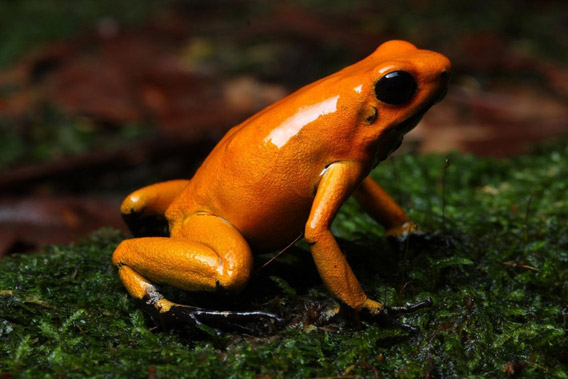
Golden poison frog. Photo by: © ProAves.
Touching a wild golden poison frog could kill you within minutes: in fact, a single golden poison frog, whose Latin name Phyllobates terribilis is even more evocative than its common one, is capable of killing 10 humans with its one milligram dose of poison. Yet the deadly nature of this tiny frog has not stopped it from nearing extinction. Now, in a bid to save the species, the World Land Trust (WLT) and Colombian NGO ProAves have teamed up to establish a 50 hectare (124 acres) reserve in the Chocó rainforest.
Found only in Colombia, the golden poison frog is currently imperiled by deforestation and fragmentation with its habitat stripped away for agriculture, logging, coca growing, and illegal gold mining. While the new reserve is small, the WLT says a healthy population of the endangered species survives in the new protected area.
“The reserve will be initially protected by one ranger from the local community—increasing the size of the ranger team is dependent on funding. At the moment the reserve does not have any infrastructure on it, but in the near future ProAves intend on building a small ranger cabin—this will lead to better reserve protection and management,” World Land Trust told mongabay.com.
The organization also hopes to expand the reserve, but this is dependent on overcoming difficult land issues in the area.
“There is a potential to create a larger protected area with the Negro Renacer Community, but this is also something that is in the beginning stages,” World Land Trust added.
Dubbed the most poisonous vertebrate on the planet, the tiny golden poison frog has proven a unique resource for indigenous people. Like other poison dart frogs, indigenous people wipe arrow tips on the amphibians—without hurting them—to load their tips with poison. The arrow head retains its mortal toxicity for two years.
Related articles
Vampire and bird frogs: discovering new amphibians in Southeast Asia’s threatened forests
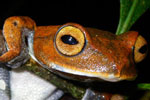
(02/06/2012) In 2009 researchers discovered 19,232 species new to science, most of these were plants and insects, but 148 were amphibians. Even as amphibians face unprecedented challenges—habitat loss, pollution, overharvesting, climate change, and a lethal disease called chytridiomycosis that has pushed a number of species to extinction—new amphibians are still being uncovered at surprising rates. One of the major hotspots for finding new amphibians is the dwindling tropical forests of Southeast Asia.
New frog trumps miniscule fish for title of ‘world’s smallest vertebrate’
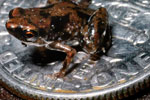
(01/12/2012) How small can you be and still have a spine? Scientists are continually surprised by the answer. Researchers have discovered a new species of frog in Papua New Guinea that is smaller than many insects and dwarfed by a dime. The frog trumps the previously known smallest vertebrate—a tiny fish—by nearly 1 millimeter.
The world’s tiniest frogs, the size of a Tic Tac, discovered in New Guinea
(12/16/2011) Scientists have discovered the world’s tiniest frogs in Papua New Guinea.
New species of frog sings like a bird
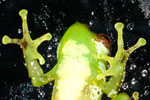
(12/12/2011) If you’re trudging through the high-altitude rainforests of northern Vietnam and you hear bird song, you might want to check the trees for frogs. Yes, that’s right: frogs. A new species of tree frog has been discovered in Vietnam that researchers say has a uniquely complex call that makes it sound more like a bird than a typical frog. Discovered in Pu Hoat Proposed Nature Reserve, the new species, dubbed Quang’s tree frog (Gracixalus quangi), dwells in the forests at an altitude 600-1,300 meters (nearly 2,000-4,265 feet).
Photos: two new paper clip-sized frogs discovered in Vietnamese mountains
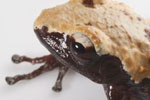
(12/07/2011) Researchers have discovered two new frog species living in the montane tropical forests of Vietnam. Known as moss frogs, these small amphibians employ camouflage as one way to keep predators at bay, in some cases resembling the moss that gives them their name.